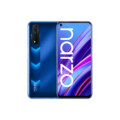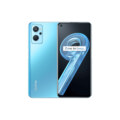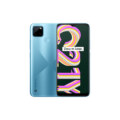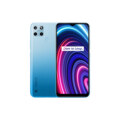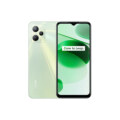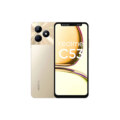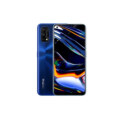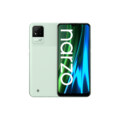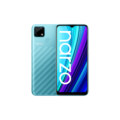Realme 8 pro
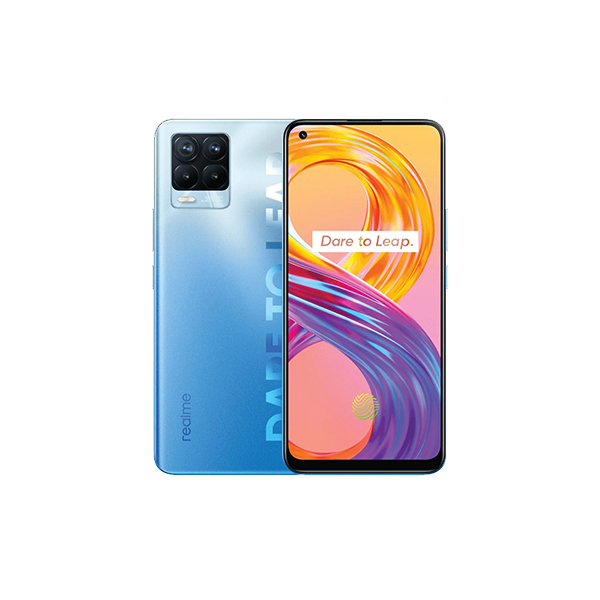

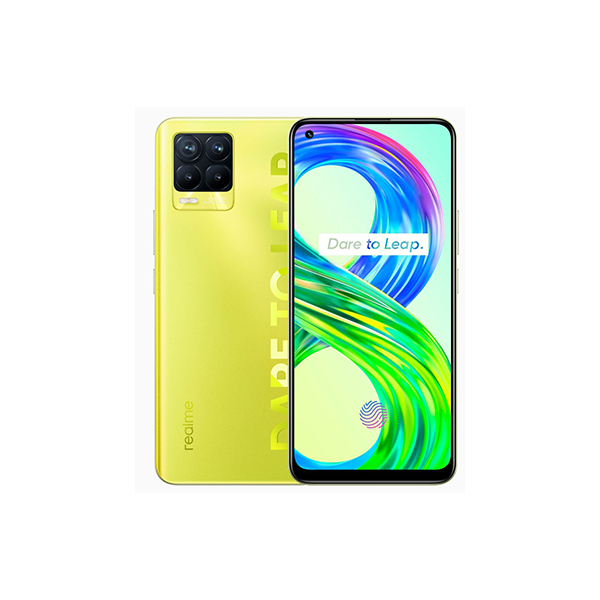
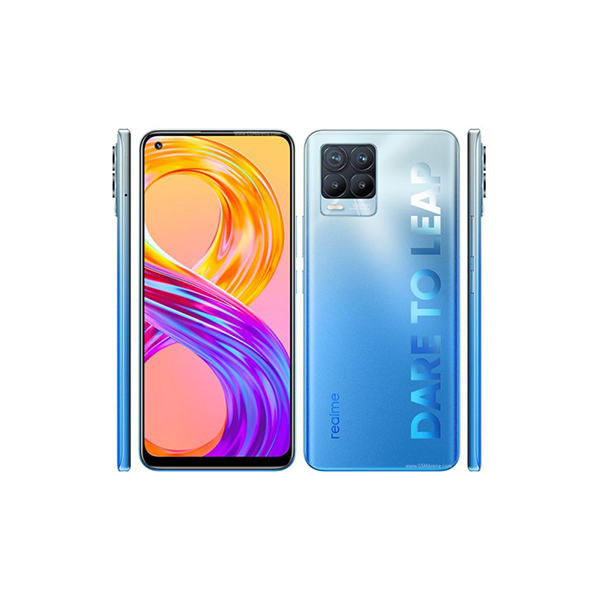
Specs
General
| Device Type | Realme Phone |
| Announced | 24 March, 2021 |
| Released | 25 March, 2021 |
| Status | Available |
Design
| Dimensions | 160.6 x 73.9 x 8.1 mm |
| Weight | 176 g |
| Protection | Glass front, plastic frame, plastic back |
| Colors | Infinite Blue, Infinite Black, Punk Black, Illuminating Yellow |
Display
| Refresh Rate | 60 Hz |
| Display Type Display Technology => A number of display technologies and types used in mobile phones => TFT (Thin Film Transistor), IPS (In-Place Switching), OLED (Organic Light Emitting Diode), AMOLED (Active-Matrix Organic Light-Emitting Diode), Super AMOLED (an even advanced version of AMOLED), Resistive Touchscreen (Resistive touchscreens contain two layer of conductive material with a very small gap between them which acts as a resistance), Capacitive Touchsceen (Capacitive touchscreen technology consists of a layer of glass coated with a transparent conductor) | Super AMOLED |
| Size | 6.4 inches |
| Resolution | 1080 x 2400 pixels |
| Display Colors Display Colors is refers to the number of different shades of colors that the screen is capable of displaying => 64K colors, 256K colors and 16 million colors, Obviously 16M is highest available range of colors and better than others. | 16M Colors |
| Pixel Density Pixel Density (PPI) is refers to the concentration of pixels on a particular display, measured in pixels per inch (ppi). Pixel density is calculated by dividing the diagonal pixel resolution of a display by its diagonal size, higher pixel density better display quality. | ~ 411 ppi |
| Touch Screen | Capacitive Touchscreen, Multitouch |
| Features | 430 nits (typ), 1000 nits (peak) |
| Secondary Display | No |
Camera
| Front Camera | 16 MP, f/2.5, (wide |
| Camera Setup | Quad |
| Main Camera Camera is able to capture photographs and usually videos, The most important characteristics of a camera are the resolution (measured in megapixels), lens focus type (fixed or automatic), higher megapixel cameras are known to capture higher quality photos, but not always a good measurement of the photos quality. |
108 MP, f/1.9, 26mm (wide), 1/1.52", 0.7µm, PDAF 8 MP, f/2.3, 119˚, 16mm (ultrawide), 1/4.0", 1.12µm 2 MP, f/2.4, (macro) 2 MP, f/2.4, (depth) |
| Video | 4K@30fps, 1080p@30/60/120/480fps, 720p@960fps, gyro-EIS |
| Camera Features | Geo-tagging, Phase detection, HDR, Panorama |
| Flash Flash Light => There is commonly two types of flash lights are used in camera mobile phones, LED Flash (LED flash offers lower power consumption with drive circuitry that takes up very little room, LEDs can be strobed faster than any other light source), Xenon Flash (xenon flash produces an extremely intense full-spectrum white light for a very short duration) | LED flash |
Hardware
| Operating System OS => Every computer system run on a base software called Operating System (OS). Operating System controls all basic operations of the computer (such as smartphone, PDAs, tablet computers and other handheld devices). The Operating System allows the user to install and run third party applications (apps), apps are used to add new functionality to the device. | Android 12 |
| Chipset Chipset is a group of integrated circuits designed to perform one or a more dedicated functions, often with real time computing constraints, Popular smartphones are equipped with more advanced embedded chipsets that can do many different tasks depending on their programming. | Qualcomm SM7125 Snapdragon 720G |
| CPU CPU (Central Processing Unit) mostly known as processors, CPU processes instructions in order to carry out certain functions that make your device operate properly. Processors are often described as the brain of computers, smartphones and tablets, Smartphones and tablets rely on processors to carry out their every task, Processors are an incredibly important factor in selecting any type of computing device, including your smartphone. | Octa-core (2x2.3 GHz Kryo 465 Gold & 6x1.8 GHz Kryo 465 Silver) |
| Architecture | 64 bit |
| Fabrication | 8 nm |
| GPU GPU (Graphics Processing Unit) is a single-chip processor designed to rapidly manipulate and alter memory to accelerate the creation of images in a frame buffer intended for output to a display, This includes things such as lighting effects, object transformations, and 3D motion. | Adreno 618 |
| RAM (Memory) RAM (Random Access Memory) is a type of computer memory that can be accessed randomly, any byte of memory can be accessed without touching the preceding bytes that allows information to be stored and accessed quickly from random locations. RAM is the most common type of memory found in computer systems, smartphones, tablets and other electronic devices. | 8 GB |
| Internal Storage Internal Storage is a data storage space (flash memory) mostly used in smartphones, tablets and other electronic devices where operating system, apps, music, photos, videos, files and other user data Is stored. | 128GB Built-in |
| Card Slot Memory Card Slot is a special slot for inserting a memory card. Memory cards allow you to expand the phone's built-in memory, A memory card (sometimes called a flash memory card or a storage card) is a small storage medium used to store data such as text, pictures, audio, and video, for use on small, portable or remote computing devices such as mobile phones, mp3 players, digital cameras. | |
| Sensors Sensors are electronic components that detects and responds to some type of input from the physical environment. The specific input could be light, heat, motion, moisture, pressure and location, The output is generally a signal that is converted to use in computing systems, a location sensor, such as a GPS receiver is able to detect current location of your electronic device. | Accelerometer, Compass, Fingerprint (under display, optical), Gyro, Proximity |
Network
| SIM TYPE SIM (Subscriber Identity Module) is a small card that contains mobile network subscriber's account information. This allows the phone using the card to attach to a mobile network. The SIM card is most commonly associated with GSM and UMTS mobile networks. Moving a SIM card from one phone to another allows a subscriber to switch mobile phones without having to contact their mobile network carrier. SIM cards can also be used by a phone to store limited amounts of data, such as phone numbers and text messages. | Nano SIM |
| SIM Technology | Dual Sim, Dual Standby (Nano-SIM) |
| 2G Network | GSM 850 / 900 / 1800 / 1900 |
| 3G Network | HSDPA 850 / 900 / 1700(AWS) / 1900 / 2100 |
| 4G Network | LTE band 1(2100), 3(1800), 5(850), 8(900), 38(2600), 40(2300), 41(2500) |
Multimedia
| FM Radio | |
| Stereo Speakers | NO |
| Loudspeaker | YES |
| Audio Jack | 3.5mm Audio Jack |
| Audio Features |
24-bit/192kHz Hi-Res audio Active noise cancellation with dedicated mic |
Connectivity
| Wi-fi Wi-Fi is a popular wireless networking technology using radio waves to provide high-speed network connections that allows devices to communicate without cords or cables, Wi-Fi is increasingly becoming the preferred mode of internet connectivity all over the world. | Wi-Fi 802.11 a/b/g/n/ac, dual-band, Wi-Fi Direct |
| Bluetooth Bluetooth is a wireless communications technology for exchanging data between mobile phones, headsets, computers and other network devices over short distances without wires, Bluetooth technology was primarily designed to support simple wireless networking of personal consumer devices. | v5.1 with A2DP, LE |
| GPS GPS The Global Positioning System is a satellite-based radio navigation system, GPS permits users to determine their position, velocity and the time 24 hours a day, in all weather, anywhere in the world, In order to locate your position, your device or GPS receiver must have a clear view of the sky. | A-GPS support, & GLONASS |
| USB | USB Type-C 2.0, USB On-The-Go |
| EDGE EDGE (Enhanced Data GSM Environment) is a wireless network technology generally considered the next step in the 2G network offers data transfer rates up to four times faster than ordinary GSM networks, Generally, EDGE is used for the purpose of wireless data transfer, such as sharing pictures and videos or browsing the Internet via a mobile phone connection. | |
| GPRS GPRS (General Packet Radio Service) is a packet oriented mobile data service on the 2G and 3G cellular communication system's global system for mobile communications (GSM), Generally, GPRS is used for the purpose of wireless data transfer, such as sharing pictures and videos or browsing the Internet via a mobile phone connection. | |
| Speed | 3G (HSPA 42.2/11.5 Mbps), 4G LTE-A |
| Wi-fi Hotspot | |
| NFC NFC (Near field communication) is a set of standards for smartphones and similar devices to establish peer-to-peer radio communications with each other by touching them together or bringing them into proximity, usually no more than a few inches. |
Features
| Messaging | SMS(threaded view), MMS, Email, Push Mail, IM |
| Web Browser Web Browser => a web browser is a software application used to locate, retrieve and display content on the World Wide Web, including Web pages, images, video and other files, The primary function of a web browser is to render HTML, the code used to design or markup webpages. | HTML5 |
| Games | Built-in + Downloadable |
| Torch |
Battery
| Battery Type Battery Type => Cell phones run on various kinds of batteries depending on the manufacturer, phone size or shape and features. There are basically four types of cell phone batteries => Lithium Polymer, Lithium Ion, Nickel Metal Hydride and Nickel Cadmium. | Li-Ion (Lithium Ion) |
| Capacity Battery Capacity is a measure (typically in Amp-hr) of the charge stored by the battery, and is determined by the mass of active material contained in the battery. The battery capacity represents the maximum amount of energy that can be extracted from the battery under certain conditions. | 4500 mAh |
| Placement | Non-removable |
| Wireless Charging Wireless Charging (Inductive Charging) uses an electromagnetic field to transfer energy between two objects. This is usually done with a charging station. Energy is sent through an inductive coupling to an electrical device, which can then use that energy to charge batteries or run the device. | No |
| Extra |
Fast charging 50W 50% in 17 min, 100% in 47 min (advertised) |
Realme 8 Pro: Detailed Review
Introduction:
The Realme 8 Pro, launched in March 2021, is positioned as a feature-rich mid-range smartphone that offers a compelling package with a focus on camera capabilities and performance. With a competitive price, the Realme 8 Pro aims to attract users looking for a powerful device with impressive specifications without spending a premium. This review provides a comprehensive look at the Realme 8 Pro, covering its design, display, performance, camera system, battery life, software, and more, along with a summary of its pros and cons.
Specifications at a Glance
- Display: 6.4-inch Super AMOLED (2400 x 1080 pixels, 411 ppi), 90Hz refresh rate
- Processor: Qualcomm Snapdragon 720G
- RAM: 6GB or 8GB LPDDR4X
- Storage Options: 128GB UFS 2.1, expandable via microSD
- Rear Cameras:
- 108 MP (wide, f/1.9)
- 8 MP (ultrawide, f/2.3)
- 2 MP (macro, f/2.4)
- 2 MP (depth sensor, f/2.4)
- Front Camera: 16 MP (f/2.5)
- Battery: 4500 mAh, 50W fast charging
- Operating System: Realme UI 2.0 based on Android 11
- Other Features: In-display fingerprint sensor, USB Type-C, no headphone jack
Design and Build Quality
Aesthetics:
- Modern Design: The Realme 8 Pro features a sleek and contemporary design with a glossy finish on the back, which is available in several colors including Infinite Blue, Infinite Black, and Punk Black. The rear panel houses the distinctive camera module with a large 108 MP sensor.
- Color Options: The phone comes in various color options that add a touch of style, including vibrant and classic choices.
Durability:
- Build Materials: The phone has a plastic back and frame, which contributes to its lightweight design but may not feel as premium as glass or metal alternatives. The front is protected by Gorilla Glass 5, offering some level of durability against scratches and minor drops.
- Ergonomics: With a 6.4-inch display and a thickness of 8.1 mm, the Realme 8 Pro is comfortable to hold and use with one hand. Its lightweight nature, at 176 grams, makes it easy to carry around.
Overall, the Realme 8 Pro presents a modern and stylish design that is both functional and aesthetically pleasing, though the plastic build may not appeal to all users.
Display
Specifications:
- Size: 6.4-inch Super AMOLED
- Resolution: 2400 x 1080 pixels (411 ppi)
- Refresh Rate: 90Hz
- Brightness: Up to 1000 nits peak
- Color Support: Wide color gamut with HDR10 support
Performance:
- Vibrant Display: The Super AMOLED display on the Realme 8 Pro delivers bright, vivid colors and deep blacks, making it great for media consumption, gaming, and everyday use.
- 90Hz Refresh Rate: The 90Hz refresh rate ensures a smooth scrolling experience and more fluid animations compared to standard 60Hz displays.
- HDR10 Support: HDR10 support enhances the dynamic range of videos, providing more detailed and lifelike content.
In summary, the Realme 8 Pro’s display is one of its standout features, offering a vibrant, smooth, and immersive visual experience with its AMOLED panel and high refresh rate.
Performance
Hardware:
- Processor: Qualcomm Snapdragon 720G
- RAM: 6GB or 8GB LPDDR4X
Performance Evaluation:
- Speed and Efficiency: The Snapdragon 720G chipset provides solid performance for everyday tasks, gaming, and multitasking. The Adreno 618 GPU handles graphics-intensive applications and games reasonably well.
- Gaming Performance: While not a flagship chipset, the Snapdragon 720G handles games like PUBG and Call of Duty: Mobile at medium to high settings. The phone remains smooth and responsive under most conditions.
- RAM Options: With 6GB or 8GB of RAM, the Realme 8 Pro ensures efficient multitasking, with ample memory to handle multiple apps and processes simultaneously.
Overall, the Realme 8 Pro offers good performance for its segment, making it suitable for both regular use and moderate gaming.
Camera System
Rear Cameras:
- Primary Lens: 108 MP (wide, f/1.9)
The 108 MP sensor captures detailed and vibrant photos in various lighting conditions. The use of pixel binning improves low-light performance, though it may not match the capabilities of flagship devices. - Ultrawide Lens: 8 MP (f/2.3)
The 8 MP ultrawide lens provides a wider field of view, ideal for landscapes and group shots. The quality is decent but may suffer from distortion at the edges. - Macro Lens: 2 MP (f/2.4)
The macro lens allows for close-up shots with decent detail, though it’s not as impressive as dedicated macro cameras on other devices. - Depth Sensor: 2 MP (f/2.4)
The depth sensor assists in creating bokeh effects for portrait shots, producing a pleasing background blur.
Front Camera:
- Resolution: 16 MP (f/2.5)
The 16 MP front camera takes clear and detailed selfies with good color accuracy. It also supports AI beautification features for enhanced photo quality.
Camera Performance:
- Daylight Photography: The camera system performs well in daylight, delivering sharp and detailed images with vibrant colors. The 108 MP sensor offers a high level of detail.
- Low-Light Photography: Night mode improves low-light photography, though results may vary and may not match the performance of higher-end devices.
- Video Recording: The Realme 8 Pro can record 4K video at 30 fps and 1080p at 60 fps. The video quality is good, with stable footage and accurate colors.
In conclusion, the Realme 8 Pro’s camera system is versatile and capable, providing a strong performance for both photography and videography, though it may not match flagship-level performance in all areas.
Battery Life
Specifications:
- Battery Capacity: 4500 mAh
- Charging: 50W fast charging
Performance:
- Battery Life: The 4500 mAh battery provides solid endurance, easily lasting a full day of moderate to heavy use. With lighter use, it can stretch into a second day.
- Fast Charging: The 50W fast charging capability is a significant advantage, allowing the phone to charge from 0 to 100% in about 47 minutes, which is excellent for users who need quick top-ups.
Overall, the Realme 8 Pro offers dependable battery life with fast charging capabilities, making it a reliable choice for users who require extended usage and quick recharges.
Software
Operating System:
- Original OS: Realme UI 2.0 based on Android 11
- Upgradability: The Realme 8 Pro is expected to receive updates to newer versions of Android, though the pace and availability may vary.
User Experience:
- UI Features: Realme UI 2.0 offers a clean and customizable interface with various features such as Dark Mode, customizable icons, and gesture navigation.
- Performance Over Time: The software experience is smooth, with regular updates improving functionality and security.
- App Compatibility: The device supports all apps available on the Google Play Store, including those that leverage the latest software features.
Software Features:
- Customization: Realme UI provides extensive customization options, allowing users to tailor the interface to their preferences.
- Performance Enhancements: The UI is optimized for performance, offering a smooth and responsive experience.
In summary, the Realme 8 Pro provides a solid software experience with Realme UI 2.0, offering a user-friendly interface and customization options.
Pros & Cons
Pros:
- Impressive Camera System: The 108 MP primary camera delivers detailed and vibrant photos, complemented by a versatile set of lenses.
- Vibrant AMOLED Display: The 6.4-inch AMOLED display with a 90Hz refresh rate offers bright colors and smooth scrolling.
- Fast Charging: The 50W fast charging support is excellent, allowing for quick top-ups and minimal downtime.
- Good Performance: The Snapdragon 720G and ample RAM provide smooth performance for everyday tasks and moderate gaming.
- Expandable Storage: The microSD slot allows for additional storage expansion, which is a handy feature.
Cons:
- Plastic Build: The use of plastic for the back and frame may not feel as premium as glass or metal alternatives.
- Average Low-Light Camera Performance: While capable, the low-light performance may not be as strong as higher-end devices.
- No 5G Support: The Realme 8 Pro lacks 5G connectivity, which might be a drawback for users looking for future-proofing.
- No Headphone Jack: The absence of a 3.5mm headphone jack may be inconvenient for users who prefer wired headphones.

Conclusion:
The Realme 8 Pro stands out as a solid mid-range smartphone with a powerful camera system, vibrant display, and fast charging capabilities. While it may
Review
Disclaimer Note
All prices in Pakistan is updated daily from the price list provided by local shops and dealers but we can not guarantee that the information / price on this page is 100% correct (Human error is possible), always visit your local shop for exact cell phone cost & rate.
